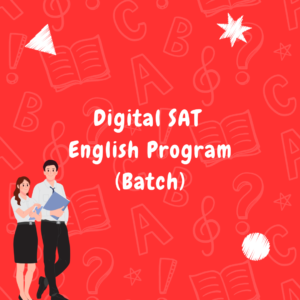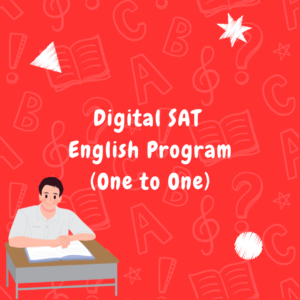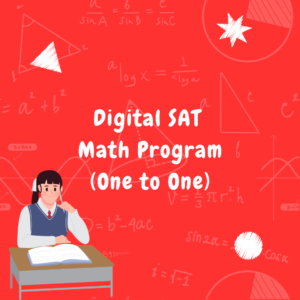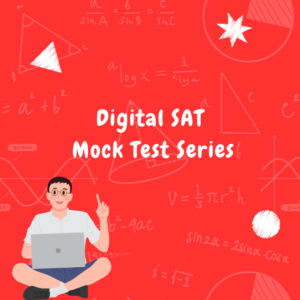The Digital SAT, a modern evolution of the traditional Scholastic Assessment Test (SAT), has transformed the landscape of standardised testing in the realm of college admissions. This technological advancement has not only streamlined the examination process but has also introduced a host of benefits and conveniences for students aspiring to pursue higher education. Let’s understand how the Digital SAT differs from the traditional pen paper SAT, how students can register for it, its frequency of administration, and who stands to benefit the most from taking this digital exam.
How is Digital SAT different from the pen paper SAT?
The Digital SAT represents a departure from the conventional paper-based format of its predecessor. Unlike the pen paper based SAT, which required students to use pencils and fill in bubbles on answer sheets, the Digital SAT is entirely computer-based. Test-takers now interact with a digital interface to answer questions, read passages, and manage their test time. This transition offers a more efficient and dynamic testing experience, allowing for easier navigation through the test and enabling instant score reporting.
How can a student register for the Digital SAT?
Registering for the Digital SAT is a straightforward process. Students can create an account on the College Board website, where they will find comprehensive information about test dates, locations, and fees. They can choose their preferred test centre, pay the registration fee, and select the Digital SAT option when prompted during registration. The online registration system also offers accommodations for students with disabilities, ensuring equitable access to the exam.
How many times a year is the Digital SAT conducted?
The Digital SAT is administered 7 times a year, with test dates typically scheduled in March, May, June, August, October, November, and December. Click here to view test dates and deadlines.
This increased frequency provides students with greater flexibility to choose a test date that aligns with their academic calendar and college application deadlines. It’s worth noting that the availability of test dates may vary by region, so students should check the College Board website for the most up-to-date information.
Who should take the Digital SAT?
The Digital SAT is an excellent option for high school students seeking to apply to colleges and universities majorly in the United States. Some colleges in Canada, Singapore, Australia, and India also accept Digital SAT Scores. These colleges and universities consider the Digital SAT score as an important metric and an essential part of the admissions process. Therefore, students aiming to bolster their college applications, demonstrate their academic abilities, or qualify for scholarships should consider taking the Digital SAT. Additionally, the digital format may be particularly appealing to those who are comfortable with technology and prefer a more interactive testing experience.
In conclusion, the Digital SAT represents a significant shift in standardised testing, offering students a convenient and adaptable way to showcase their academic aptitude. Whether you’re a high school student planning to take the SAT for college admissions or an educator guiding students through the process, understanding the differences, registration process, frequency, and target audience of the Digital SAT is essential for success in this important step toward higher education.
Click here for more information.
The Digital SAT comprises two main sections: Reading & Writing and Math, each with its own allocated time. Test-takers have 64 minutes for Reading & Writing and 70 minutes for Math, totaling 2 hours and 14 minutes.
Each section is subdivided into two equally timed modules. A 10-minute break is scheduled between the Reading & Writing and Math sections. The first module in each section includes a variety of difficulty levels (easy, medium, and hard). Due to the sectional adaptive nature of the test, depending on performance in the first module, the difficulty level of the second module will be adjusted accordingly.
| Section | Questions | Time Allotted | Time / Ques. |
| Reading & Writing (Module 1) | 27 | 32 mins | 1 min 11 secs |
| Reading & Writing (Module 2) | 27 | 32 mins | 1 min 11 secs |
| Math (Module 1) | 22 | 35 mins | 1 min 35 secs |
| Math (Module 2) | 22 | 35 mins | 1 min 35 secs |
| Total Test Duration = 2 hours 14 mins | |||
| Content Domain | Skill/Knowledge Testing Points | Operational Question Distribution |
| Craft and Structure |
|
13–15 questions ~28% |
| Information and Ideas |
|
12–14 questions ~26% |
| Standard English Conventions |
|
11–15 questions ~26% |
| Expression of Ideas |
|
8–12 questions ~20% |
| Content Domain | Skill/Knowledge Testing Points | Operational Question Distribution |
| Algebra |
|
13–15 questions ~35% |
| Advanced Math |
|
13–15 questions ~35% |
| Problem-Solving and Data Analysis |
|
5–7 questions ~15% |
| Geometry and Trigonometry |
|
5–7 questions ~15% |

Our Approach
We begin with organising the Diagnostic Test to understand the following:
- Whether the student is better suited for Digital SAT or ACT.
- The starting point for a particular student in comparison to the peers.
- Determine the student’s potential and set realistic goals for the final test.
Phase 1 : The Learning Phase
During this phase, the students are taught the basics! They learn various concepts, rules, and techniques to master each section of the Digital SAT! Homework is given to the students after every class to strengthen their concepts and ensure they are working towards their goals.
Phase 2 : The Practice Phase
We also call this a Confidence Building Phase. This is a very crucial phase as the students realize their strengths and areas of weaknesses. We give additional practices to the students for every section along with Sectional Tests. Subsequently, students come across various doubts and the Doubt Classes happen during this phase, resulting in a surge in the confidence level of every student.
Phase 3 : The Mock Phase
Post completion of the Practice Phase, the student is conditioned for the actual test! Until now, he/she was just sprinting! Now the real marathon starts! The student takes 10 Full Length Digital SAT Mocks before the 1st Attempt of the Digital SAT.
Not just that, after every attempt the student has to do the analysis using the answer guide to understand his/her mistakes. We organise 2 Mock Review Sessions every week, in which the teacher helps the student identify the root cause of the mistakes and problems so that they could be avoided going forward. These Mock Review Sessions are 1:1 regardless of whether you signed up for a batch or 1:1 program.
Additional benefits of enrolling with LessonBoard
- Individual WhatsApp group with each family for regular updates.
- Comprehensive Books and Material
- 10 Digital SAT Mocks with actual test interface for accurate practice.
- Regular Parent-Teacher Meetings to track the student's progress
- Unlimited Doubt Classes
- Hand holding the student till 2nd attempt or 1 year, whichever is earlier.
- Money Refund Promise (Read our refund policy)
-
 ₹70,800.00
₹70,800.00 -
 ₹123,900.00
₹123,900.00 -
 ₹70,800.00
₹70,800.00 -
 ₹123,900.00
₹123,900.00 -
 ₹19,999.00
₹19,999.00 -
 ₹182,900.00
₹182,900.00 -
 ₹106,200.00
₹106,200.00
